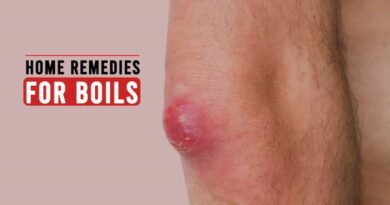Home Remedies for Yeast Infection
Yeast infection is common in women which is a commonly cause by a fungus that grows naturally in the vagina called Candida albicans. It makes you feel discomfort, itching, inflammation, painful and smelly discharge in your private parts. Not to fear you can try home remedies for yeast infection and get rid of it.
Yeast infection is caused by a fungal infection called candida. A study found that it affects 75 women out of 100(1). It may also affect men with sexually transmitted diseases.
Table of Contents
Causes
Candida is the common fungus lead to yeast infection. It has 20 different strains cause infection on body parts. Candida albicans is the fungus which may lead to yeast infection, main vaginal yeast infection. It is very important to prevent or treat a yeast infection.
Home Remedies for Yeast Infection
Here are some of the home remedies for yeast infection:
1. Garlic
A study found that garlic has an antifungal property which fight against candida. It acts easy and excellent home remedy for yeast infection (2).
How to Use It
- Swallow 2-3 garlic clove with water
- Do it twice a day
Caution: Don’t use garlic paste on sensitive areas to treat yeast infections such as inner thighs and vagina. Always use garlic in your diet.
Read: Home Remedies for Boils
2. Tea Tree Oil
Tea tree oil has antiviral, antifungal, and antibacterial which used to kill bacteria, fungi, and viruses. Research shows that vaginal suppository containing tea tree essential oil may help to treat vaginal infections. You can also use oil with the honey or warm water, helps to soothe the inflamed skin.
How to Use It
- Mix tea tree oil with honey apply on the affected area
- Leave it for overnight
- Rinse it with lukewarm water in the morning
- You can also use tea tree vaginal suppositories to it it
Caution: Never use tea tree oil directly on sensitive skin, it may burn. Always use diluted oil or mix with a carrier oil such as coconut oil or jojoba oil.
Read: Tea Tree Oil for Ringworm
3. Coconut Oil
Coconut oil has anti-fungal activity help to treat fungal infections caused by Candida strains(2). Studies say that coconut oil fight against Candida albicans
How to Use It
- Wash and dry with soft cloth thoroughly
- Take virgin coconut oil and apply a thin layer of oil on the affected area
- Do it twice a day
4. Oregano Oil
As yeast infection grows in the large intestine, Oregano oil prevents to spreading infection from anus to the vagina. the powerful antifungals such as carvacrol and thymol, which fights against fungus and treat yeast infection(3).
How to Use It
- Mix 3-5 drops of essential oil with a carrier such as sweet almond oil or olive oil
- Apply on the affected area skin and gently massage
- You can also use in a diffuser to inhale
Caution: Don’t apply the oil directly near to vagina. Before using oil for children and pregnant women consult a doctor.
Read: Signs of Perimenopause
5. Peppermint Oil
Peppermint oil has a compound that helps to treat Candida-related infections (4). It is also an oral thrush and known as an oral yeast infection.
How to Use It
- Mix the oil with clean water
- Swish around your mouth for a few minutes
- Spit it out
- Wash your mouth with clean water
- Do this twice a day
6. Apple Cider Vinegar
Apple cider vinegar bath is an excellent remedy for yeast infection. ACV has antifungal properties effective against candida(5).
How to Use It
- Add ACV in water and drink it
- You Can use ACV bath
- Add ½ cup of ACV in a lukewarm bathtub
When you add ACV in a bathtub, the acidic component in vinegar can kill microorganisms, including yeast.
Read: Know All About Ovarian Cysts
7. Boric Acid
Boric acid is a mild solution you can use for eyewash, it also helps to kill viruses(antiviral) and yeast(antifungus). Topical boric acid is recommended by the Centers for Disease Control and Prevention (CDC), for vaginal infection treatment.
How to Use It
- Fill boric acid in a gelatin capsule and close it
- Keep the capsule in the vagina before going to sleep
- Do this for 12 to 15 days to get rid of the infection completely
Caution: Do not take orally or apply on broken skin, it is toxic in large amounts. Do not use pregnant women without a doctor’s advice.
8. Yogurt
Probiotics are an effective way to treat Candida albicans. Yogurt can be considered as a probiotic while it has live bacteria(Lactobacillus acidophilus). A mixture of yogurt and honey can reduce yeast infection symptoms(6).
A study says that consuming yogurt helps to increase gut microbiome and reduce yeast. If you don’t like yogurt then you can add probiotics with the foods.
How to Use It
- Dip a cotton tampon in a plain yogurt
- slip it into the vagina
- Don’t push so far
- Let it be for 2-3 hours
- Repeat it every few hours
Read: Benefits of Pubic Hair
9. Epsom Salt Bath
Epsom salt has a chemical compound called magnesium sulfate. It helps to kill yeast and treat infection(7).
How to Use It
- Add 2 cup of Epsom salt in a bathtub containing warm water
- Dissolve it giving few swirls
- Soak in the water for 10 to 15 minutes
- Do it thrice in a week
10. Aloe Vera
Aloe vera acts as antifungal effects on C.albicans(8). It also soothes irritation and reduces inflammation.
How to Use It
- Take an aloe vera leaf and extract gel from it
- Apply this gel on the affected area as a thin layer
- Let it dry in the air
- Repeat 2-3 time in a day
Signs and symptoms of a yeast infection
Yeast infection is most commonly seen in the genitals or oral parts.
Oral thrush or oral yeast infection has the following symptoms:
- Difficulty in swallowing food
- White patches in the mouth
- Pain in the infected part
Signs and symptoms of a vaginal yeast infection:
- Redness, swelling, and burning of the affected area
- Pain or burning sensation or while urinating
- Unbearable itchiness in and around the vagina
- White discharge
- Soreness
- Pain during sex
Read: Change Your Underwear Everyday
Preventing Tips vaginal yeast infections
- Limit processed foods and the amount of sugar you consume. Yeast thrives on sugar
- Don’t use antibiotics unnecessarily
- Wear loose-fitting, cotton underwear
When to See a Doctor
Mostly these home remedies for yeast infection give relief in a few days. Sometimes it will take a week.
If the new symptoms appear that are separated from yeast infection symptoms then consult a doctor immediately.
Bottom Line
This home remedies may work or not is dependent on the person, treatment for severity of the infection. If the remedies not responding on infection immediately consult a doctor for a natural approach for treating the yeast infection.
Keep in mind that remedies or product use may irritate the vaginal skin. Consult a doctor if you feel more discomfort or irritation.
Also Read:



